Why Brick Buildings Face Rapid Destabilization: Warning Signs and Solutions
This past week, we took a look at a particular building where a paulownia tree is growing between an older portion of the building and a newer portion of the brick facade. The tree looks like it’s ripping its way out of this space between the walls and tearing the walls apart in the process. Although it sounds like a very violent process, it’s actually happening slowly so any sense of violence isn’t palpable when you’re looking at it on site. Instead it feels like something that could have been there for an eternity.
Generally it works relatively slow, but in the scale of time and the scale of the life of historic buildings like this, this tree is actually growing relatively quickly. In only a matter of years or a few decades, this wall may collapse, and this tree will be the cause of the walls’s destruction.
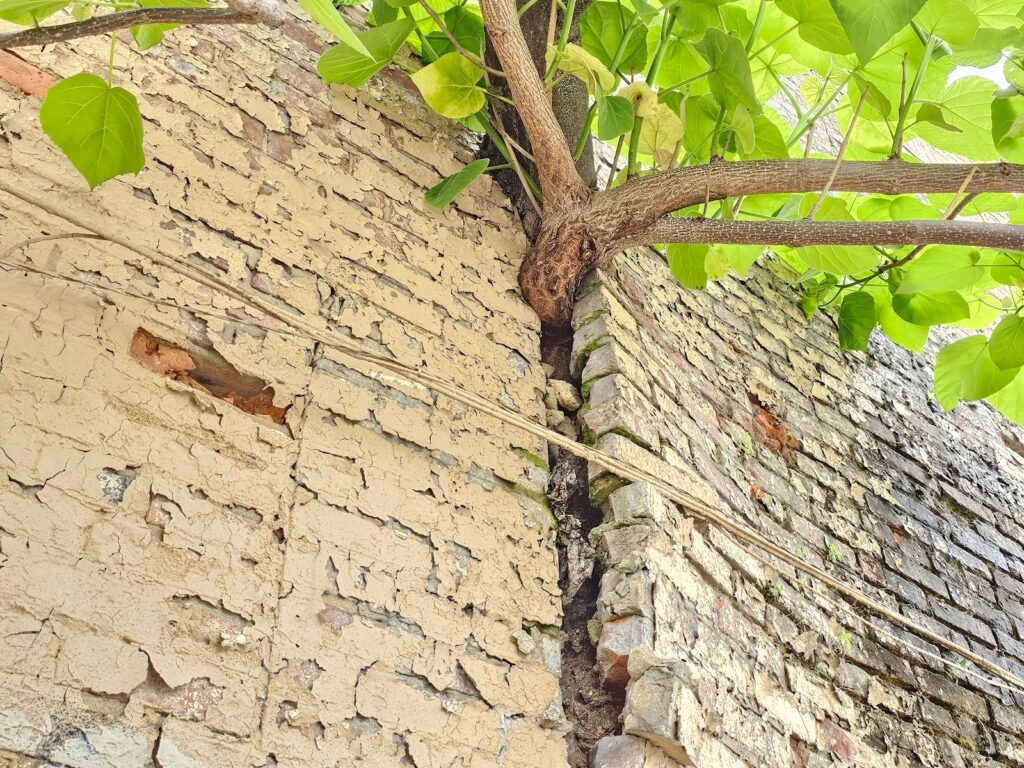
A picture below shows the separation. Imagine where the trunk is snaking its way between the space of these two parts of the building, the brick now sticks out 5 inches from its original location. It’s actually a wonder that it’s still standing at this very moment because many parts of these bricks could start to fall out, under their own weight.
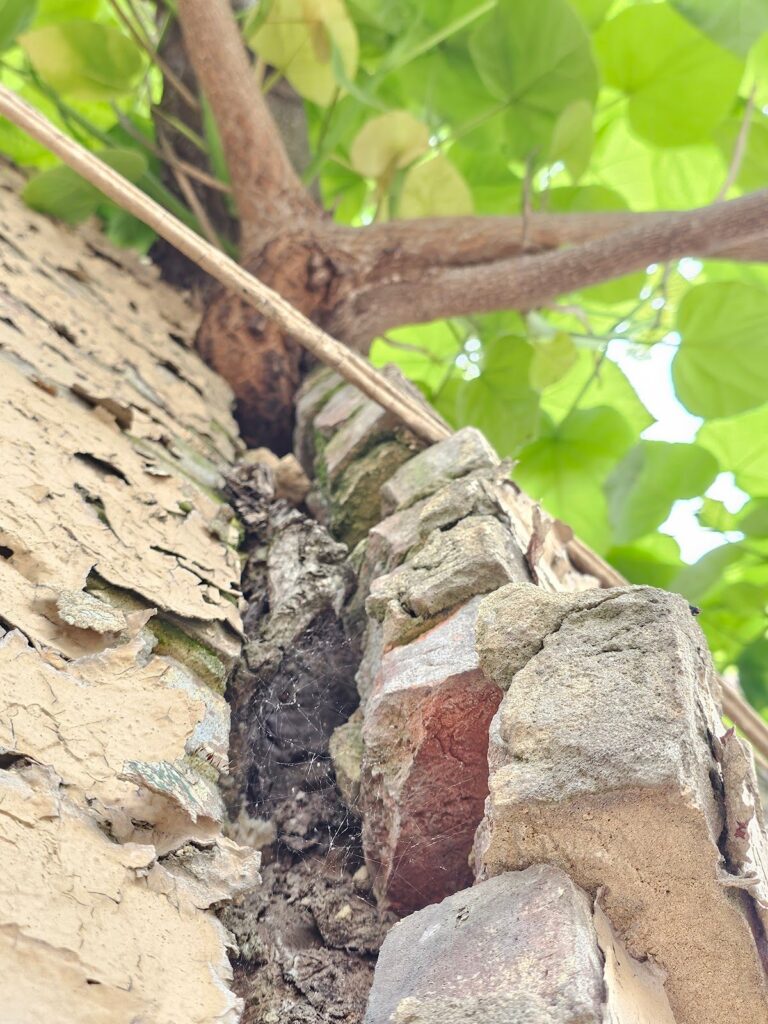 As you look at this, you might wonder how it happened, because trees don’t slither through buildings quite like snakes, but it’s actually simple. The process starts slow, one small seed lands into a crevice, and with a little bit of moisture, begins to grow. You can see an example in the next picture below of a very small plant that took root in some part of the deteriorated mortar and masonry and just began to grow and to have little leaves as a tiny little sapling.
As you look at this, you might wonder how it happened, because trees don’t slither through buildings quite like snakes, but it’s actually simple. The process starts slow, one small seed lands into a crevice, and with a little bit of moisture, begins to grow. You can see an example in the next picture below of a very small plant that took root in some part of the deteriorated mortar and masonry and just began to grow and to have little leaves as a tiny little sapling.
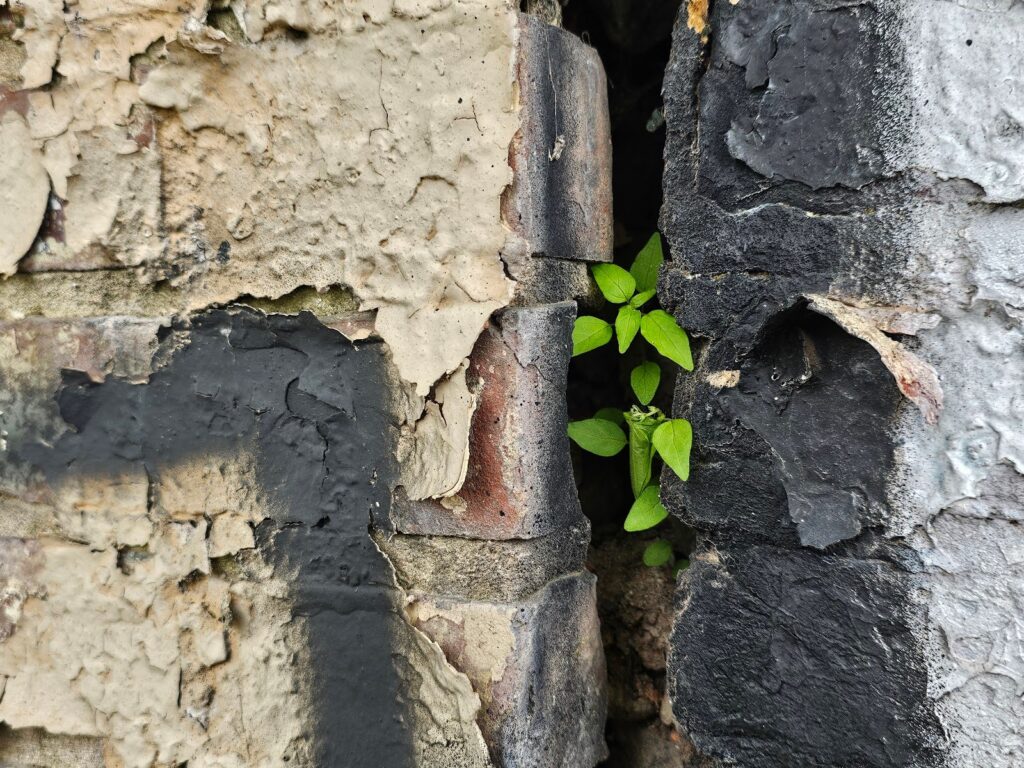
In time, this tree will just keep growing, it has the elements it needs. Since there is an open crevice or void in this area, it will take the moisture from precipitation in the natural environment and that precipitation will accumulate into the loose elements of mortar and sand which will feed the plant. Simultaneously it’ll get sunlight and it will just continue growing until it’s strong. Also, since it’s nestled away inside this little crevice area it’s actually kind of protected from some of the elements and other things that hurt or kill other plants when plants are more exposed. It’s almost like a perfect storm.
It should go without saying, but this is exactly why masonry restoration and ongoing upkeep and maintenance are so important. Problems like this are so easy to fix before they even start. When mortar becomes soft and weak at the outer edge of the wall, it can just be repointed. The process is laborious but it can save so much trouble and deterioration that will occur later if it’s not protected and maintained well and ongoing basis.
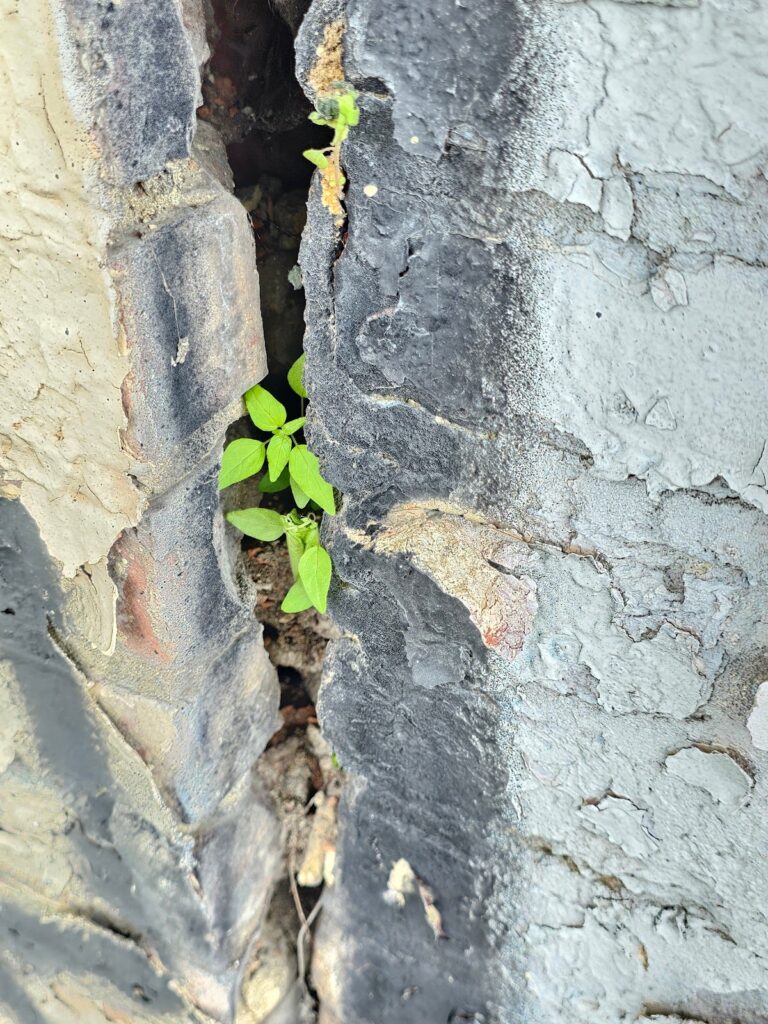
Without somebody fixes these type of problems it’ll just end up like the next picture below where it’s full blown, fully grown, and looks almost like a regular intended tree on a city street. It’s not a regular intended tree though because it’s literally tearing a building apart.
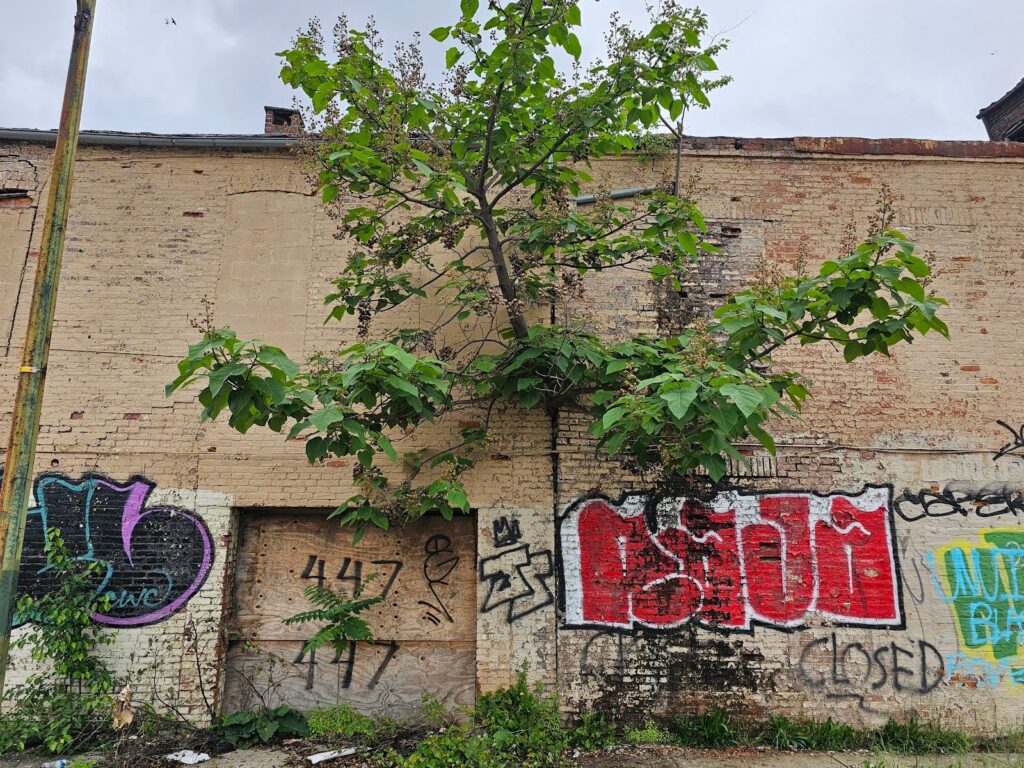
At the top of this article we talked about how bricks themselves will eventually break down. Even after the walls have been razed and leveled and reduced to piles of loose bricks on the ground, those loose bricks themselves will also break down into smaller components until they turn into dust. That process may take centuries or even millennia, but you can see examples of that process happening, both driven from typical deterioration and exposure to the elements and also driven by mechanical means from man and construction equipment.
In the field shown in the picture below, the bricks of the historic formerly standing buildings litter the dirt, the dirt and those bricks have basically merged together in a chunky soup, all mixed up.
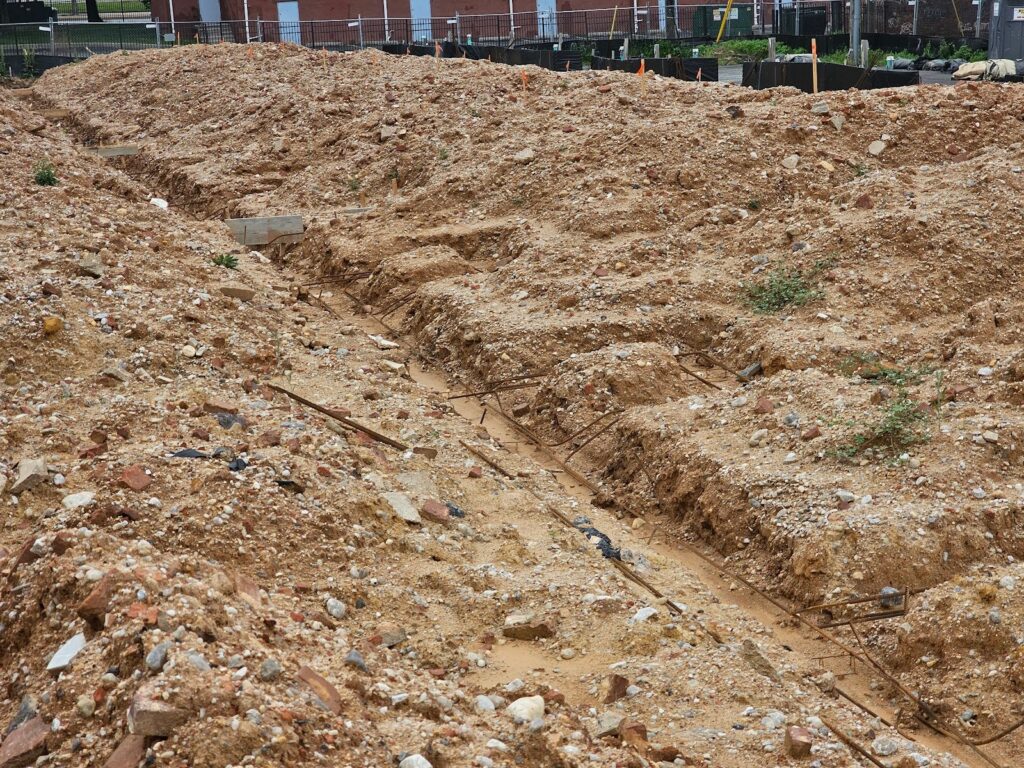
When you look closer, as shown in the next picture below, you can start to see some of these bricks. They’re there in the dirt, and spread throughout, all around, and you can actually see them more clearly as you get closer.
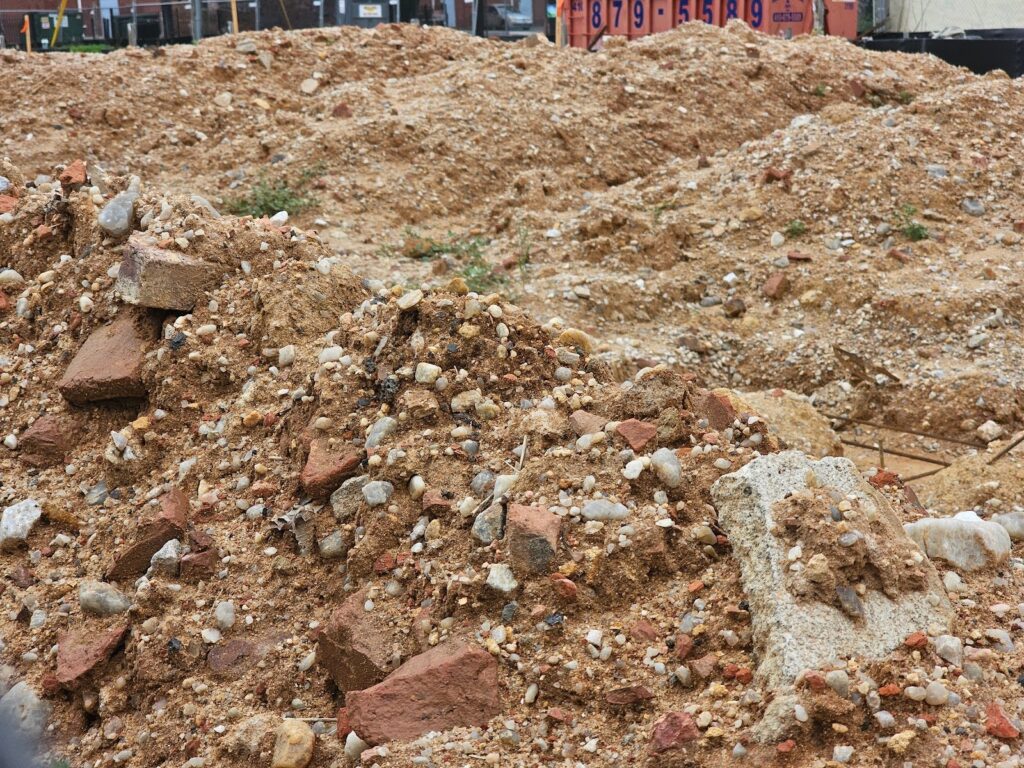
These bricks make up a big part of the soil content and are spread throughout, all over, in this range of ruins of the former historic buildings.
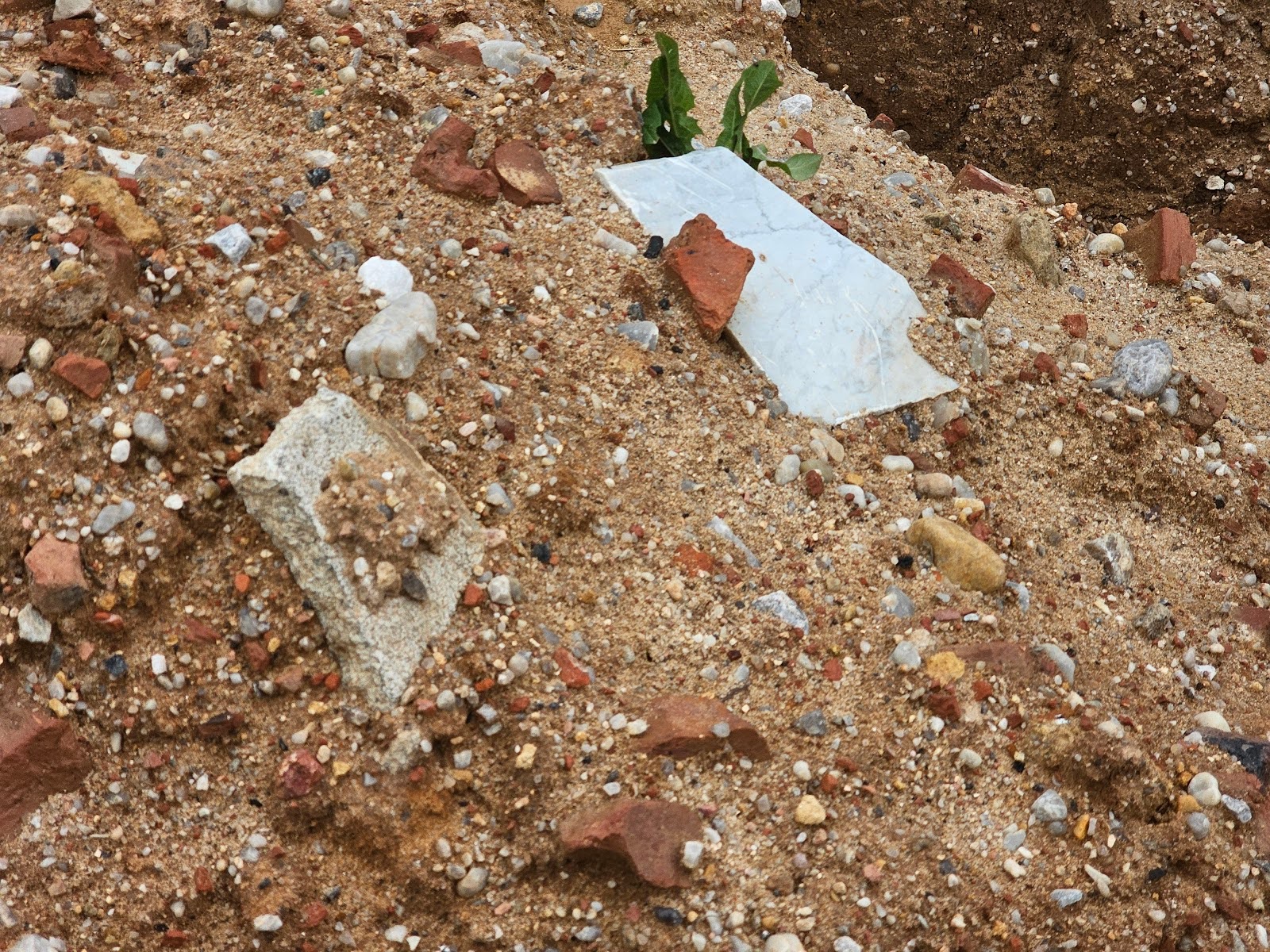
Our company, Dupont Tuckpointing and Masonry, specializes in masonry restoration, historic brick repointing, and tuckpointing services in the Washington D.C. area. These buildings are uniquely historic, and their preservation requires skilled masons who are technically trained in the best practices and knowledge of proper restoration techniques.
We understand the significance of maintaining the architectural integrity of these historic structures, and our team of experienced professionals is dedicated to delivering exceptional craftsmanship. Whether you require masonry restoration, tuckpointing, or brick repointing services, we are here to help.
At Dupont Tuckpointing and Masonry, we take pride in our work and strive to ensure that every project is executed with the utmost care and attention to detail. We are committed to preserving the rich heritage of Washington D.C.’s built environment for generations to come.
If you have any questions or needs regarding masonry restoration, historic brick repointing, or tuckpointing services, please do not hesitate to reach out to us. We would be delighted to assist you and provide you with the expertise and quality workmanship that your historic property deserves.
You can reach us by telephone at (202) 796-7644 and you can reach us by email from the contact form on our website at https://duponttuckpointingmasonrydc.com/contact-us/




